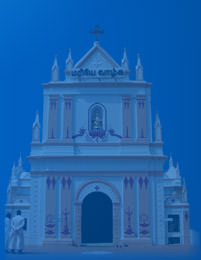STIGMATA OF THE CRUCIFIED
We honour in this month the memory of St. Francis of Assisi, one of the greatest saints of the Catholic Church. St. Bonaventure, minister-general of the Franciscans from 1257- 1274, wrote about St. Francis, who making a retreat in Mount La Verna (Alvernia) in 1224, received the ‘stigmata of the Crucified’ after a vision of the Crucified Jesus. This gracefilled experience of stigmata was/is given by God to more than 500 saints in the history of the Church. The first recorded case of these wounds was in the year 1222, by Stephen Langton of England. Other famous stigmatists include Saint Catherine of Siena, Saint John of God, and Saint Marie of the Incarnation. The most famous stigmatist of the twentieth century was Saint Pio of Pietrelcina (1887-1968). Stigmata is the spontaneous manifestation of bloody wounds on a person’s hands, feet, forehead and back, similar to the wounds of the crucified Jesus. The stigmata, in St. Francis’ case is not just a physical pain, but, as in the case of St. Paul, is a missionary suffering: “always carrying in the body the death of Jesus, so that the life of Jesus may also be made visible in our bodies” (2 Cor 4:10).
UNIVERSAL BROTHERHOOD!
Francis considered all nature the mirror of God and so he called creatures his “brothers” and “sisters.” The most endearing stories about him are how he preached to the birds and persuaded a wolf to stop attacking the people of the town of Gubbio and their livestock if the townspeople agreed to feed the wolf. In his “Canticle of the Creatures” he referred to “Brother Sun” and “Sister Moon,” the wind and water, and even “Sister Death.” He nicknamed his long and painful illnesses his “sisters,” and he begged pardon of “Brother Ass the body” for having unduly burdened him with his penances. His boundless love for animals and nature earned him the honour to be the patron saint of ecology.
Above all, his deep sense of brotherhood embraced his fellow men, for he considered himself no friend of Christ if he did not cherish those for whom Christ died. When the world was shattered by various wars and destruction of nature St. Francis, with a deep sense of universal brother/sisterhood, embraced Jesus’ evangelical mission of accepting and loving everyone. The Fifth Crusade in the early thirteenth century continued the fierce enmity between the Muslim rulers of the Holy Land and the Christian world. St. Francis made the effort to travel to Egypt and encountered Malek al-Kamil, the sultan of Egypt in August 1219, succeeding with peace negotiations. This meeting of “the Sultan and the Saint,” exhibited Francis’ love for universal brotherhood (Lk 10), and yet is another mark of the grace of the stigmata he was awarded by God. Instead, forgetting often the words of St. Paul that there is no discrimination among the disciples of Christ (Gal 3:28) we are prone to divide society on the basis of caste, colour, language or region.
PARTICIPATION IN JESUS’ MARTYRDOM!
No doubt, stigmata are symbols of union with Christ and participation in His martyrdom. These are manifestations of one’s heroic virtues and great love of the Cross. When darkness of worldly glory and materialism overshadowed Christian Europe in the Middle Ages, St. Francis rose to show its ugly figure of wantonness by witnessing himself to simplicity and austerity. He did not live in the desert a hermit, but lived among men, being a light to the blinded laxity and waywardness of wandering society. He lived the love of poverty which he thought the essential life-style of any disciple of Christ and this consists not in external poverty but total denial of the Self (Phil 2:7). Martyrdom, as Francis showed, is not merely experiencing physical suffering, but taking one’s daily cross and following Jesus (Lk 9:23). Francis, thus, shows us that self-denial is the mark of stigmata each one should bear so that we can truly follow Jesus. Jesus demands of us a total surrender to God and his designs when he speaks about committed discipleship (cf. Lk 9:57-62). We are reminded by Jesus in this pericope that the following of Jesus does not simply mean imitation of him but entering into the very conditions of his life, ministry, and lot, sacrificing one’s security, filial duty and even family affection (Fitzmyer, Luke, I, 834).
OUR BEARING OF THE STIGMATA!
Social stigmas, such as race, community and such are in general, negatively considered. Even a criminal bears a stigma that views him dispiritingly. When Jesus carried His cross up to Golgotha to be crucified, the cross was thought to be not so much a burden to carry but a humiliating punishment. But he transformed it to be salvific and holy. Our works of mercy and justice, our efforts of reconciliation and peace, and our abstaining from laziness, gossip or slanderous and malicious actions are indeed, stigmata of the Cross, though painful, they are symbols of committed discipleship. This is the reason why St. Paul could boast of the Cross of Christ (Gal 6:14). In fact, we are tempted to bear negative stigma such as enmities, strife, jealousy, anger, quarrels, dissensions and such; but by contrast we should strive to carry the stigmata of the Crucified such as love, peace, patience, kindness, generosity, faithfulness and such (cf. Gal 5:20-24).











